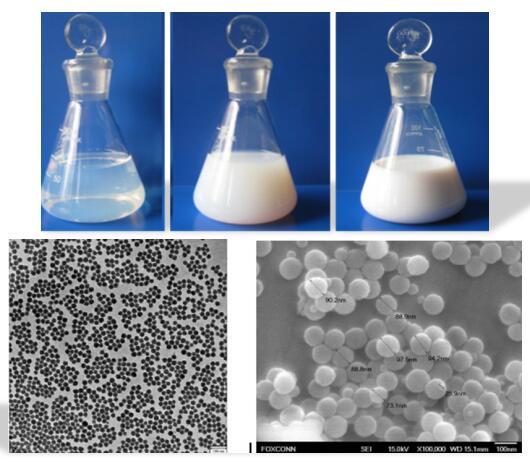
RESEARCH
Factors affecting the stability of silica sol
2023-03-29 10:22

The colloidal particles of silica sol have a particle size of nanometer, a specific surface area of 20-600m2/g, and a relatively large surface energy. According to the second law of thermodynamics, in order to reduce the surface energy of sol particles, small particles tend to agglomerate to form large particles, which then leads to agglomeration or gel. Therefore, the colloidal particles of silica sol are metastable phases, and there is always the possibility of spontaneous agglomeration. The stability of colloids mainly depends on aggregation stability and kinetic stability, which are related to ζ The three factors, potential, Brownian motion and sufficient solvent barrier, are closely related. If one of the three factors is weakened, the colloid will produce gel or coalescence. Once condensed into gel, it cannot be heated or solvent added to make it become a sol again. Therefore, this process is irreversible. The main factors affecting the stability of silica sol are as follows:
(1) PH value
The H+concentration in silica sol has a significant impact on the stability of silica sol, so silica sol can be divided into different regions based on the pH value of the system, and the stability of different regions is different When the silica sol system is alkaline (pH~10), the surface of silica gel particles carries more charges, ζ The potential is also relatively high, and the repulsive force between the colloidal particles is much greater than the gravitational force. The system is in a stable region and can be preserved for a long time As the concentration of H+decreases and the pH drops between 5 and 7, the amount of charge carried on the surface of the colloidal particles sharply decreases, resulting in ζ The potential drops, reaching the isoelectric point of the sol. At this time, the colloidal particles are easy to polymerize to form gel, which is in an extremely unstable region. ③ When the system is acidic (pH~3), the silica gel particles change from negative to negative ζ The potential becomes positive ζ At this point, the potential of the silica sol system is in the metastable region, which is less stable than alkaline silica sol but more stable than neutral silica sol.
(2) Electrolytes
In a strongly acidic (pH<2) silica sol system, the electrolyte has the smallest impact on the stability of the system within this pH range. Because the concentration of OH - in the system is particularly low at this time, the colloidal particles will not always aggregate after contact. And at this point, the repulsive force generated by the overlap of the double electric layers of the colloidal particles plays a significant role in preventing the aggregation of silica particles.
In a neutral (4<pH<8) silica sol system, the electrolyte has the greatest impact on the stability of the system. Because at this point, as the pH value of the system increases, the concentration of OH - increases, and OH - promotes the permanent polymerization of the colloidal particles. With the increase of electrolyte concentration, the net negative charge on the surface of colloidal particles becomes less and less, and the repulsive force between colloidal particles becomes smaller, so the system is easy to form gel.
In an alkaline (pH>8) silica sol system, cations in the electrolyte will preferentially adsorb onto the surface of the colloidal particles, replacing the previously adsorbed H+. The replaced H+will be neutralized with OH - in the system, causing a decrease in the pH value of the system and thereby reducing the stability of the silica sol.
(3) Particle size
The particle size of amorphous silica particles in silica sol also plays an important role in the stability of silica sol. The smaller the particle size of silica, the worse the stability of acid silica sol, and the easier to form gel. As the particle size of silica particles increases, the stability of the silica sol system will rapidly improve. In addition, the more concentrated the particle size distribution of silica particles is, the better the stability of the system is, and the more difficult it is to form gel.
(4) Other factors
In addition to the above factors, the higher the temperature of the silica sol system, the easier it is for silica particles to aggregate, and the poorer the stability of the system. Under acidic conditions, all alcohols will enhance the stability of the system. Under alkaline conditions, only polyols can improve the stability of the system, while monohydric alcohols can promote particle aggregation.
